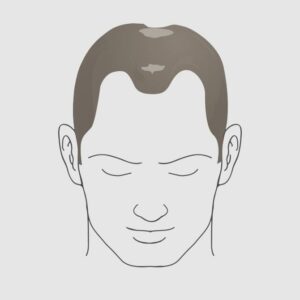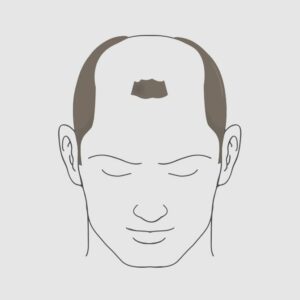The cause in over 90% of hair loss cases is defined as hair loss at the front, top and/or the crown/vertex of the scalp – known as the non-permanent area. The back and sides of the scalp, where hair usually grows for life, is known as the ‘permanent’ area.
Male pattern hair loss is brought on by the presence of hormone receptors in the hair roots in the non-permanent area – no such receptors exist in the so-called permanent area. These receptors are stimulated by the male hormone dihydrotestosterone (DHT) and, when this happens, the hair loss process is triggered. The number and location of these susceptible hairs is determined by inherited genetics from one or both parents.
Hair is lost because of a change in the lifecycle of the hair root caused by DHT. In simple terms, this cycle consists of a growing phase and a resting phase. Before hair loss sets in, the growing phase lasts up to seven years and the resting phase lasts three to four months. Genetic hair loss is a result of the life cycle phases going into reverse i.e. the growing phase becomes shorter and shorter and the resting phase longer. Eventually, the hair grows very little or not at all.
Types of Male Pattern Baldness

TYPE 1
An Adolescent or Juvenile Hairline that is not actually losing hair. This hairline generally rests just above the upper forehead.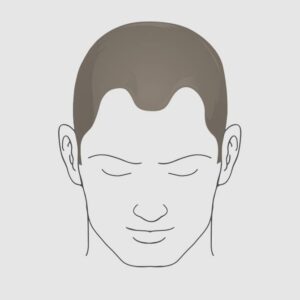
TYPE 2
Indicates a progression to the adult or mature hairline that sits a finger's breadth (1.5cm) above the upper forehead crease, with some temporal recession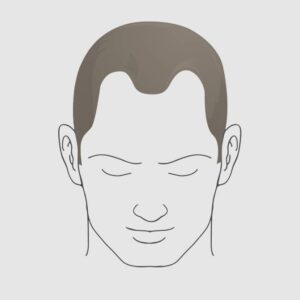
TYPE 3
The earliest stage of male hair loss that warrants investigating. It is characterised by a deepening temporal recession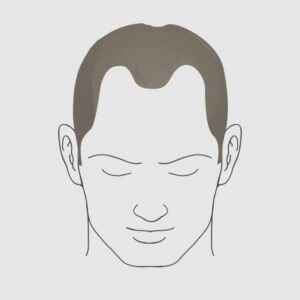
TYPE 3 Vertex
Type 3 vertex represents early hair loss at the crown (vertex) instead of or an addition to the temples.
TYPE 4.2
Is characterised by further frontal hair loss and enlargement of the crown (vertex) but there is still a solid band of hair across the top (Mid-scalp) separating front and the vertex.